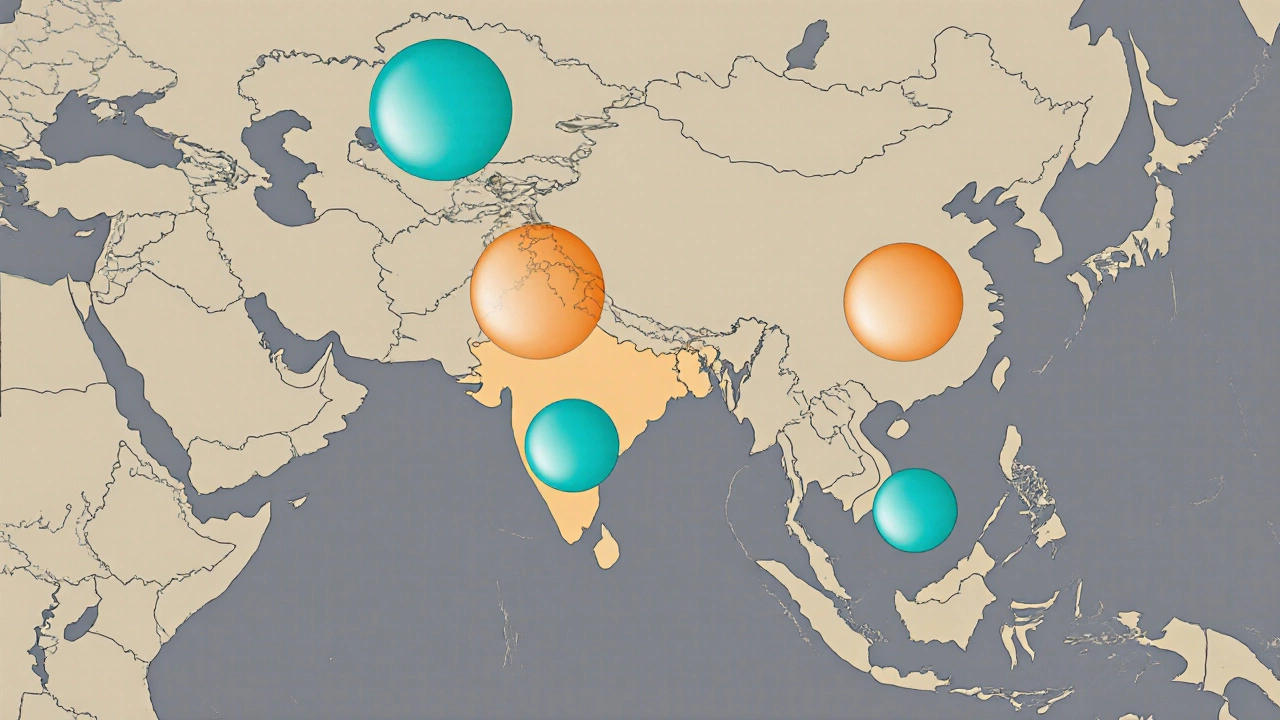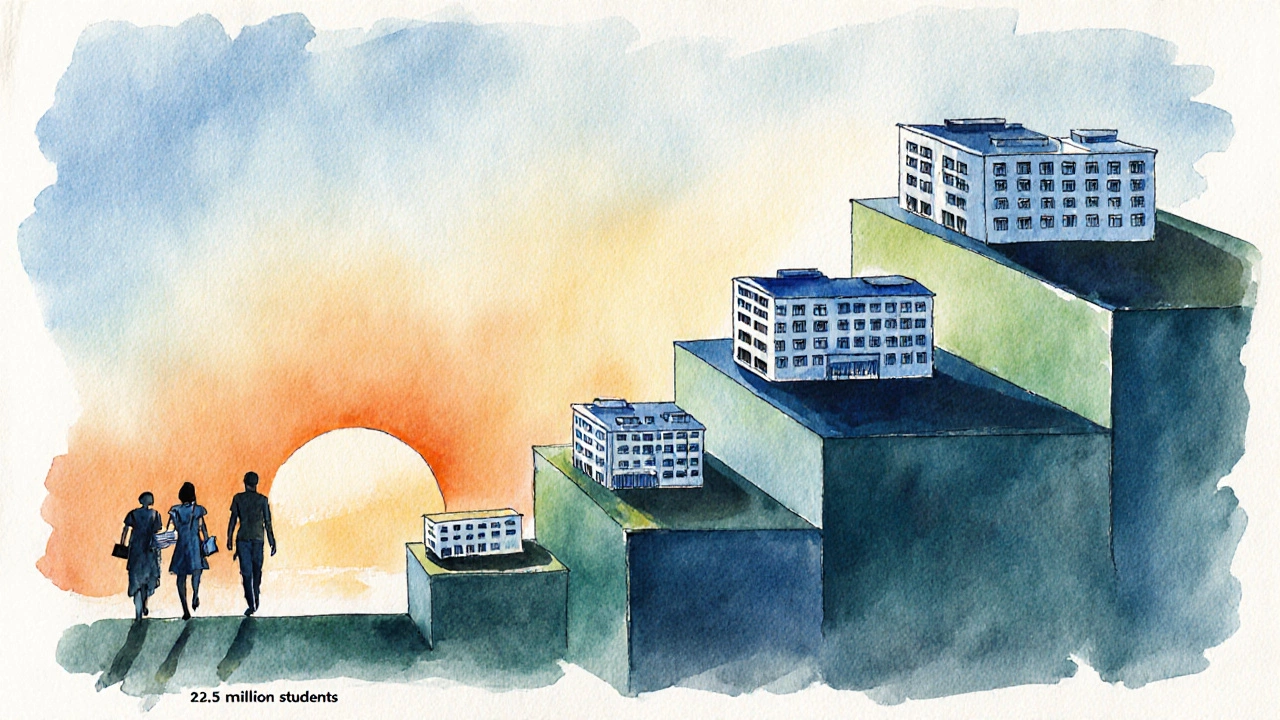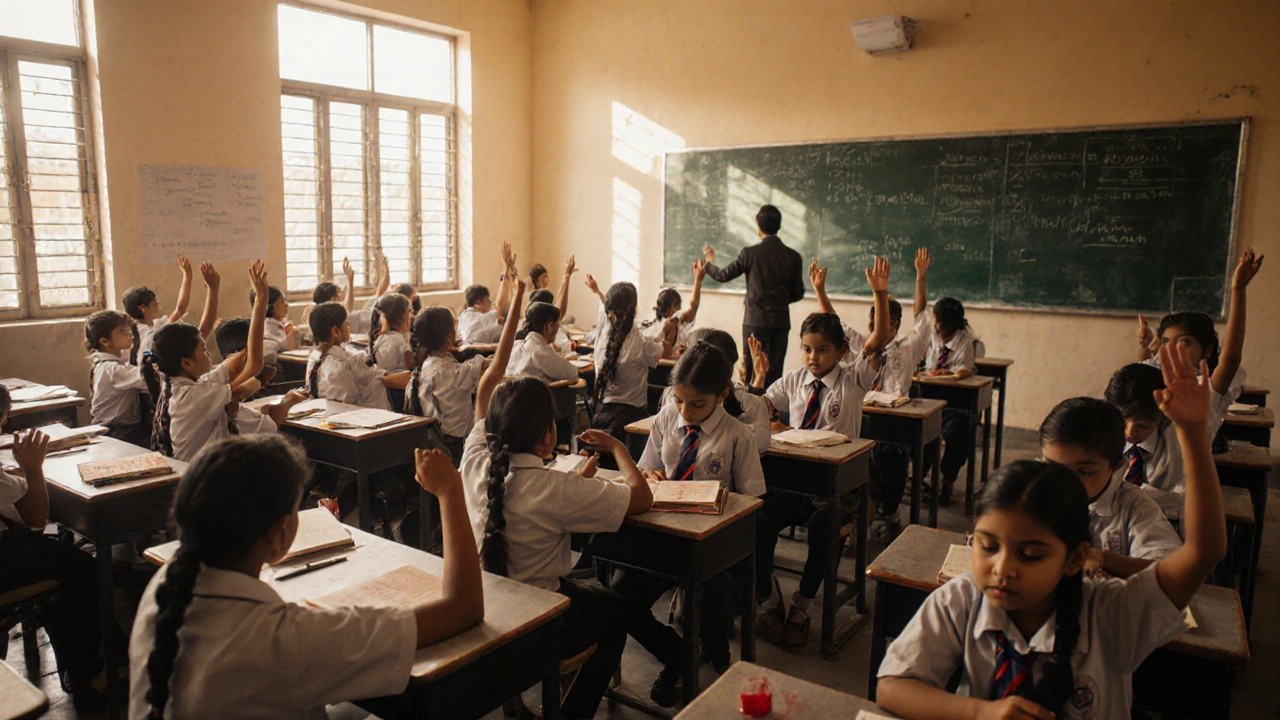CBSE Enrollment Projection Calculator
Calculate future enrollment based on current figures and growth rate. Enter values below to see projected student count.
Projected Enrollment
Ever wondered just how many kids sit in a CBSE classroom across the country? The CBSE student count isn’t a static number - it swells every year, shrinks in some phases, and reflects policy shifts, exam patterns, and demographic trends.
What is the CBSE and Why Its Numbers Matter
Central Board of Secondary Education is a national-level board of school education in India that conducts examinations for classes X and XII and prescribes a uniform syllabus for affiliated schools. Established in 1962 under the Ministry of Education (formerly the Ministry of Human Resource Development), the board oversees more than 22,000 schools and an estimated 21 million students as of 2024.
Where Do We Get the Numbers?
Accurate enrollment figures come from three main sources:
- Annual Statistical Report (ASR) published by the CBSE itself, which aggregates school‑level data submitted each June.
- All‑India Survey on Higher Education (AISHE) - while primarily focused on higher education, AISHE provides cross‑validation for class XII numbers because many students transition directly to college.
- The National Achievement Survey (NAS), conducted by the National Council of Educational Research and Training (NCERT), gives a snapshot of enrollment trends every two years.
Latest Enrollment Snapshot (2023‑2025)
Below is a year‑by‑year breakdown of students registered for the two board examinations - Class X (secondary) and Class XII (senior secondary). Numbers are rounded to the nearest 10,000 for readability.
| Exam Year | Class X Candidates | Class XII Candidates | Total Enrolled |
|---|---|---|---|
| 2023 | 10,730,000 | 9,820,000 | 20,550,000 |
| 2024 | 10,950,000 | 9,910,000 | 20,860,000 |
| 2025 (est.) | 11,120,000 | 10,030,000 | 21,150,000 |
These figures reflect a steady rise of roughly 1 % to 1.5 % annually, driven by:
- Urban migration and new CBSE schools opening in tier‑2/3 cities.
- Policy incentives that favor CBSE affiliation for English‑medium instruction.
- A growing preference among parents for the board’s national‑level standardization, which eases college admission across states.
Historical Perspective - How Fast Has the Board Grown?
When CBSE first started, it served only a handful of schools in Delhi. By 1990, the board had about 2 million students. Fast forward to 2010 - the count crossed 15 million, and by 2020 it hit 19 million.
The growth curve can be visualized as a gentle J‑shape: rapid expansion in the 1990s‑2000s due to liberalization, a plateau in the early 2010s, and another surge after the 2015 roadmap that called for “National Curriculum for All”.

CBSE vs. State Boards - Where Does It Stand?
While CBSE dominates the central‑government school segment, state boards still enroll a massive number of students. According to the Ministry of Education’s 2024 school‑level data:
| Board | Students Enrolled | Number of Affiliated Schools | Primary Language of Instruction |
|---|---|---|---|
| CBSE | 21,150,000 | ~22,000 | English (optional Hindi) |
| State Boards | 32,900,000 | ~140,000 | Regional languages |
| NIOS | 1,780,000 | ~1,400 | Multiple languages |
Even though CBSE’s share is roughly 39 % of the total school‑age population, its reach is strategic - most elite schools, many private institutions, and a large chunk of the “national‑level exam” preparation market (IIT JEE, NEET) are CBSE‑affiliated.
Regional Distribution - Which States Contribute Most?
Geographically, the northern and western zones lead the count:
- Uttar Pradesh: ~4.2 million students (≈20 % of CBSE total)
- Maharashtra: ~3.5 million students
- Delhi & NCR: ~2.8 million students (high density of private CBSE schools)
- Karnataka: ~2.1 million students
- Other states (Bihar, Tamil Nadu, West Bengal) together account for the remaining 30 %
The spread mirrors economic growth patterns - states with higher per‑capita income tend to adopt CBSE earlier because parents can afford the higher fee structure.
What Drives Enrollment Spikes?
Several policy levers influence the numbers:
- School Expansion Grants: The Ministry of Education offers financial incentives for opening CBSE‑affiliated schools in rural districts.
- Curriculum Reforms: The 2023 “Learning Continuity” amendment added more skill‑based assessments, attracting schools seeking a modern framework.
- Entrance Exam Alignment: Since I IT JEE and NEET follow the CBSE syllabus, aspirants often push schools toward CBSE affiliation.
Conversely, spikes can dip when state‑board reforms promise local language support, especially in states like Tamil Nadu where regional language pride is high.

How to Track Future Numbers
For anyone interested in monitoring the next year’s data, keep an eye on these releases:
- CBSE Annual Statistical Report - published July 1 each year.
- Education Ministry’s “School Statistics” portal - updates quarterly.
- NAS and AISHE - released biennially, useful for cross‑checking.
Most reports are downloadable as PDFs; the Ministry also provides CSV datasets for data‑analysts.
Quick Takeaways
- CBSE enrolls over 21 million students as of 2025, up ~3 % from 2023.
- Class X makes up roughly 52 % of the total, Class XII about 48 %.
- CBSE holds around 39 % of India’s overall school‑board market, trailing only state boards.
- Uttar Pradesh, Maharashtra, and Delhi are the top three states by CBSE enrollment.
- Annual reports from CBSE and the Ministry of Education are the most reliable data sources.
Frequently Asked Questions
How many CBSE schools are there in India?
As of the 2024‑25 academic year, roughly 22,000 schools are affiliated with the Central Board of Secondary Education.
Does the CBSE count include NIOS students?
No. The figures presented above are strictly for CBSE‑affiliated schools. NIOS (National Institute of Open Schooling) reports its own separate enrollment numbers.
What is the projected CBSE enrollment for 2030?
Based on a 1.2 % average annual growth, analysts estimate about 23.5 million students by 2030, assuming current policies remain unchanged.
Why do parents prefer CBSE over state boards?
CBSE’s uniform syllabus, emphasis on analytical skills, and direct alignment with national competitive exams (IIT JEE, NEET) make it attractive for families aiming for higher‑education mobility.
Where can I download the latest CBSE statistical report?
The report is freely available on the official CBSE website under the ‘Publications → Annual Report’ section. Look for the PDF titled ‘CBSE Annual Statistical Report 2024‑25’.
Understanding the scale of the CBSE board helps educators, policymakers, and parents make better decisions about curriculum choices, resource allocation, and future career planning. Keep the numbers handy - they’re the pulse of India’s secondary education system.
